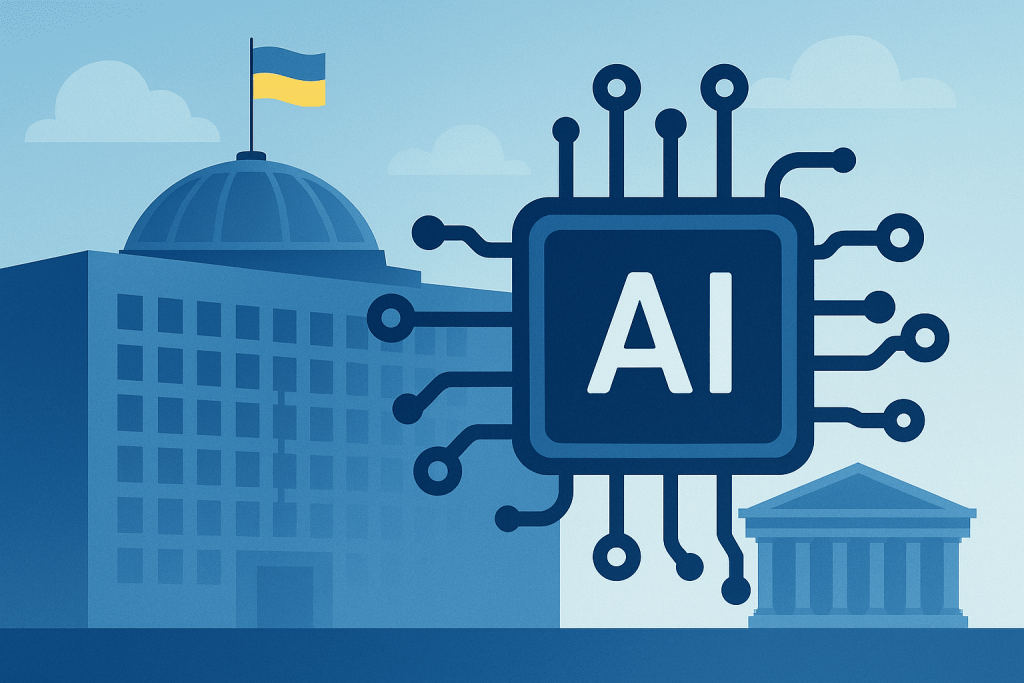
Ukraine is launching AI Factory — the first national infrastructure project aimed at supporting and developing artificial intelligence within the public sector. The idea is to create a reliable, secure, and centralized platform where key AI services of the state will operate — such as the assistant in Diia, the AI tutor in Mriia, and later, systems for healthcare, science, and defense.
This infrastructure will include GPU clusters, data centers with liquid cooling, data storage, tools for dataset preparation, and integration with government registries — all designed to ensure that AI models run fast, reliably, and with full data security compliance.
The launch of AI Factory is more than just a technological step — it’s a move toward digital sovereignty: when critical data and intelligent systems remain under state control rather than depending on foreign cloud providers.
Mykhailo Fedorov, Ukraine’s Minister of Digital Transformation, calls it “the foundation of AI independence for Ukraine.”
Why National Infrastructure Is Not Just a Good Idea — but a Necessity
Infrastructure is not a technical detail — it’s the foundation on which all bold digital initiatives stand. Relying solely on foreign cloud services brings significant risks: data may be stored abroad, fall under foreign jurisdiction, or become vulnerable to restrictions and shutdowns.
Moreover, transferring large amounts of data leads to latency — a critical factor when the system handles millions of citizen requests daily.
That’s why AI Factory can become a national backbone that ensures fast performance, low latency, and guaranteed security. The government takes on the role not only of a customer but also of an operator of the technological platform on which public digital services will evolve.
When infrastructure is in place, it can be scaled — from Diia to more complex solutions in healthcare, defense, and science. Once such a base exists, there’s no need to build everything from scratch every time — shared modules, datasets, and computing resources can be reused, saving both time and money.
Equally important is workforce development: AI Factory should become not only a hub for technology but also a center for education — training programs for engineers, analysts, and researchers. Without skilled people capable of working with AI, even the most advanced infrastructure will remain underutilized.
Challenges and Risks Along the Way
Naturally, the road to successfully launching AI Factory comes with challenges.
First, the cost: the Ministry of Digital Transformation has already allocated over 226 million UAH for hardware procurement. Choosing the right clusters, cooling systems, and network architecture are complex engineering tasks — mistakes here can lead to instability or wasted resources.
Second, security — both cybersecurity and data protection. Keeping data in Ukraine doesn’t automatically mean it’s safe. Strong encryption protocols, continuous monitoring, and auditing are essential; otherwise, breaches could undermine public trust in the project.
Third, integration with legacy government systems. Registers, databases, and IT systems of various ministries all need to be connected, standardized, and adapted. This heterogeneous environment makes the transition long and technically demanding.
Fourth, finding a balance between centralization and flexibility. If everything becomes too centralized, regional or sector-specific entities might lose the ability to implement their own specialized solutions. The key is to create a centralized platform that still allows modularity, customization, and delegated development.
How AI Factory Can Change Lives and the State
Imagine an AI assistant in Diia already running on this infrastructure: a citizen asks for a certificate or wants to check eligibility for a social benefit — and instead of filling out forms or going through multi-step dialogs, instantly receives clear instructions or a ready document.
A student has a personalized AI tutor that adapts the learning process to individual weaknesses. In healthcare, AI analyzes patient histories, assists with diagnostics, and supports doctors. In science — models process vast datasets, detect patterns, and generate predictions. In defense — AI assists with analytics, calculations, and scenario forecasting.
This is not science fiction — it’s the vision behind AI Factory. The first pilot models of Ukrainian LLMs are expected to launch by the end of 2025. Ukraine doesn’t intend to “catch up” — the goal is to enter the top 3 countries in AI development and implementation by 2030.
The Future Starts Today
The future of AI in Ukraine truly begins with infrastructure. AI Factory is not just another government project — it represents a fundamental shift in the nation’s digital transformation approach.
If it succeeds, Ukraine will gain not only a technological platform but also a guarantee that its AI-driven state systems remain under national control. If it fails, we’ll be left with piles of expensive equipment and scattered initiatives.
The key to success lies in balance: technological excellence and security, centralization and flexibility, investment and attention to detail. And most importantly — people: engineers, researchers, and developers capable of building upon and expanding this infrastructure.
Private companies also play a vital role in this process. RX-NAME already provides modern servers ready for intensive AI workloads, ensuring stability, scalability, and local data storage. This kind of collaboration between the state and private sector is essential — it allows Ukraine not only to create AI technologies but also to host and grow them on its own infrastructure.
If the government executes this vision correctly, in just a few years AI Factory could become the starting point of a new digital era — where AI is not a foreign add-on, but an invisible yet powerful backbone of public services.
Ukraine will be able to compete globally in the AI arena — not only with promising startups, but also with a strong state infrastructure and reliable partners ready to face the bold challenges of the next decade.

Leave a Reply